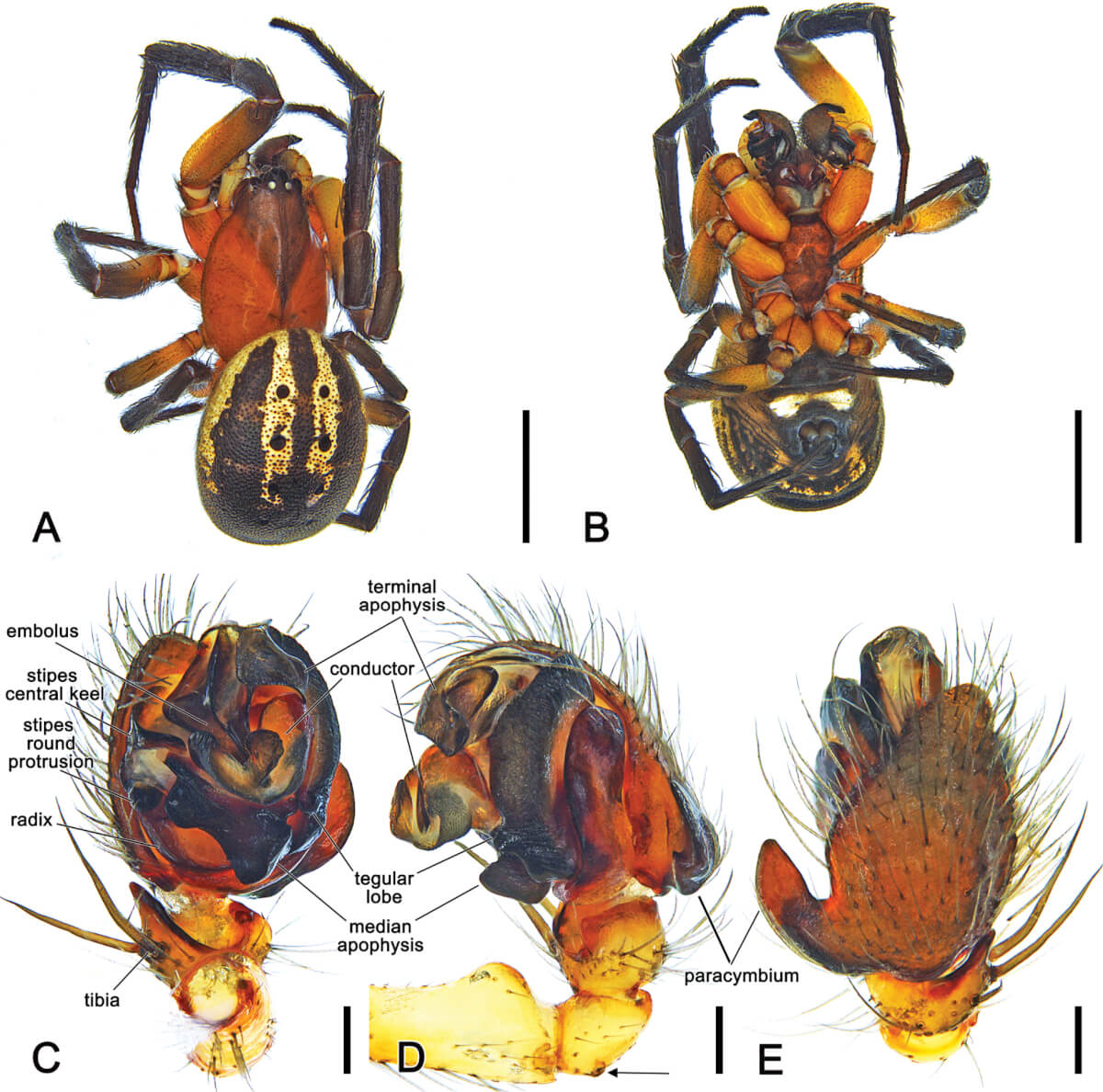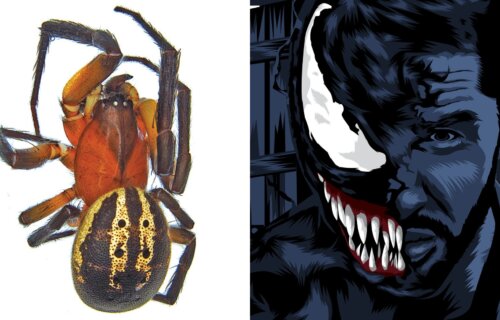PERTH, Australia — Comic book character Venom absolutely hates Spider-Man, but has been known to fight a few bad guys as well. One of the most popular antiheroes of all time, Venom has been portrayed on the big screen in two films by popular actor Tom Hardy. Now, both the fictional half-man, half-alien symbiote, and the real actor serve as the namesake for a newly discovered Australian spider.
The larger genus has been dubbed Venomius, while its only known species at this time will go by Venomius tomhardyi. Scientists described the new genus after an expedition to Tasmania. The species epithet tomhardyi honors the actor who has portrayed Venom/Eddie Brock in the recent film adaptations. Naming new species after celebrities has become something of a tradition in taxonomy, serving to draw public attention to biodiversity and the ongoing work of systematists in documenting and describing the world’s biota.
Scientists MSc Giullia Rossi, Dr. Pedro Castanheira, and Dr. Volker Framenau from Murdoch University in Perth, Australia partnered up with Dr. Renner Baptista from the Federal University of Rio de Janeiro (Brazil) to describe and classify this new genus of orb-weaving spiders. The distinctive black spots seen on the spider’s abdomen reminded the research team of Venom’s unmistakable face, serving as the inspiration for the unusual name.
The larger genus belongs to the Araneidae family of spiders known to construct upright circular webs often seen glistening with morning dew as a means of capturing prey. While this new spider resembles the related genus Phonognatha (the leaf-curling spider), as both do not have tubercles on the abdomen, the new venom-inspired spiders display distinct behavior regarding the creation of silk-lined holes in the branches of trees for shelter, as well as different genitalia.

This finding led the researchers to conclude that the similarities between V. tomhardyi and leaf-curlers are a remarkable example of convergent evolution – when unrelated organisms independently evolve similar traits in response to comparable environmental pressures.
V. tomhardyi’s genitalia are not only distinct from leaf-curlers but also highly unusual among orb-weavers as a whole. Males of the new species sport a pair of formidable macrosetae – large, thick bristles – on the tibial segment of their pedipalps, the appendages used to transfer sperm to the female during mating. Such tibial embellishments are a rarity among the thousands of known orb-weaver species. Females, too, exhibit distinctive copulatory organs, with an epigyne (external genitalia) wholly covered by a broad, lobed structure known as a scape.
The holotype of the new species underwent discovery and subsequent preservation at the Queen Victoria Museum and Art Gallery after an expedition to Tasmania, Victoria, South Australia, and Western Australia. Supplementary specimens, meanwhile, were also sourced from various scientific collections. All in all, the research team examined approximately 12,000 records across both Australian and overseas institutions.
“This is part of a long-term research that aims to document the entire Australian spider fauna, which will be of extreme importance for conservation management plans and the continuation of the decadal plan for taxonomy and biosystematics in Australia and New Zealand,” Dr. Pedro Castanheira explains in a media release.
“It is really important to keep describing new spiders to assess the total biodiversity of these predators in Australia,” says the study’s first author MSc Giullia Rossi.
The research is published in the journal Evolutionary Systematics.
